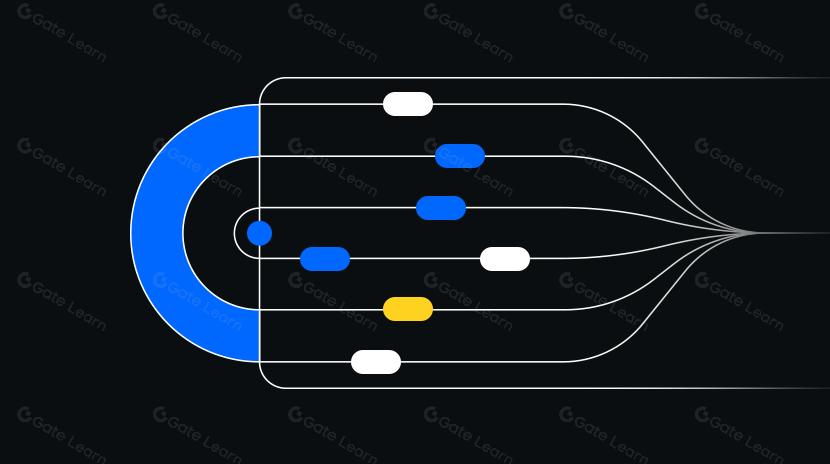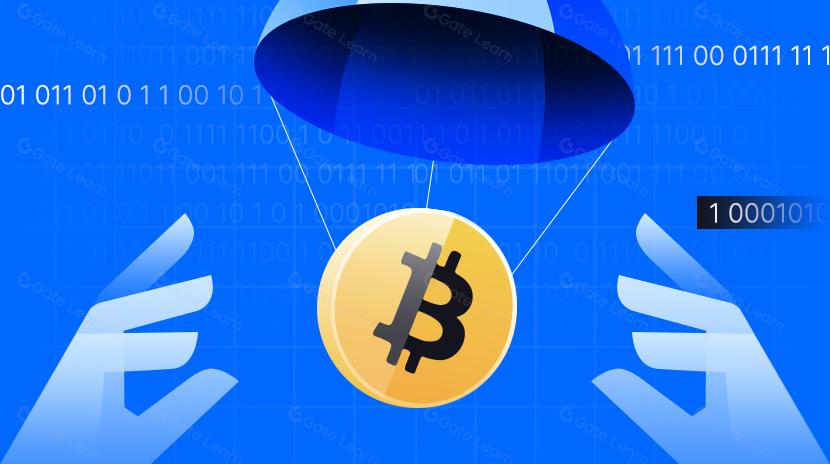Gate Research: Long-Term Holder Rotation Drives the Downturn | 1inch Launches New Aqua ProtocolCrypto Market Overview
Crypto Market Overview
- BTC (-3.19% | Current Price: 91,788 USDT): Over the past 24 hours, Bitcoin broke the stabilization seen between Nov 15–17 around $95,000 and declined again on high volume, hitting a low of $91,212.9. Its 7-day cumulative drop has reached 14.2%. Market sentiment has fallen into “extreme fear,” RSI indicates oversold conditions, and the MA5/10/30 are in a bearish alignment. The decline is mainly driven by panic selling from short-term holders, technical breakdown signals, and a shift toward bearish sentiment in prediction markets. The probability of BTC falling below $90,000 by late December rose from 8% last week to 22%. Retail and leveraged traders tend to overreact to such shifts. In the short term, oversold conditions and strategic buy orders may help stabilize the price around $90,000. Reclaiming $95,000 would help break the current bearish structure. Key focus is Friday’s jobs report—strong data may reinforce expectations of delayed rate cuts, further weighing on crypto.
- ETH (-4.03% | Current Price: 3,006 USDT): Over the past 24 hours, Ethereum fell below the key $3,000 support for the first time, reaching a low of $2,959.54. The MA5/10/30 are in a bearish alignment, RSI is in oversold territory, and bearish momentum is accelerating. Recent liquidations of high-leverage positions held by well-known traders triggered forced ETH sell-offs, amplifying volatility. In the short term, if ETH fails to reclaim $3,100, the decline may extend toward the $2,800 area.
- Altcoins: Altcoins broadly declined over the past 24 hours, with XRP down 5.07%, SOL down 5.58%, and DOGE down 5.33%. The Altcoin Season Index sits at 31, indicating still-cautious risk appetite.
- Macro: On Nov 17, the S&P 500 fell 0.92% to 6,672.41; the Dow Jones dropped 0.84% to 46,590.24; and the Nasdaq declined 0.84% to 22,708.07. As of Nov 18 at 2:00 AM (UTC), spot gold is trading at $4,034 per ounce, down 0.39% in the past 24 hours.
Trending Tokens
ELIZAOS elizaOS (+18.00%, Circulating Market Cap: $60.76M)
According to Gate market data, ELIZAOS is currently trading at $0.007939, up 18.00% in the past 24 hours. ElizaOS is a leading open-source agent framework launched by the ai16z community, supporting more than 200 crypto-native plugins through modular execution and a memory system. It is evolving into a scalable “agent-as-a-service” platform for both on-chain and Web2 applications.
Two recent catalysts have driven ELIZAOS higher: the ai16z → ELIZAOS migration (1:6) has been completed on major exchanges, enabling seamless cross-chain transfers via Chainlink’s CCIP. With migration uncertainty removed and liquidity significantly improved, multi-chain portfolio capital has flowed in. Additionally, a major exchange ended its ELIZAOS airdrop on Nov 16, requiring users to claim tokens within 24 hours, after which unclaimed tokens would be burned. On one hand, token burning reduces effective supply; on the other, claimants are unable to mass-sell within 24 hours, easing sell pressure and creating temporary supply tightness.
DUSK Dusk Network (+19.25%, Circulating Market Cap: $35.86M)
According to Gate market data, DUSK is trading at $0.07317, up 19.25% in the past 24 hours. Dusk Network is a decentralized blockchain protocol offering private and transparent solutions for payments, communication, and asset ownership transfers. Unlike PoW/PoS consensus, Dusk introduces a new privacy-oriented consensus mechanism—Segregated Byzantine Agreement (SBA).
On Nov 14, Dusk announced partnerships with Chainlink and the Dutch securities exchange NPEX, adopting Chainlink’s CCIP and data feeds. The goal is to tokenize over €200 million in regulated securities, combining compliance with blockchain efficiency. This integration positions DUSK as a bridge between traditional finance and DeFi, attracting institutional interest. The tokenization of securities increases DUSK’s utility as network gas and a staking token, directly linking demand to RWA activity.
ICP Internet Computer (+14.96%, Circulating Market Cap: $3.127B)
According to Gate market data, ICP is trading at $5.707, up 14.96% in the past 24 hours. Internet Computer is a decentralized cloud blockchain capable of hosting secure, highly resilient applications, websites, and enterprise-grade systems, while supporting trustless multi-chain interactions. It also functions as a “self-writing cloud,” where users can instruct an AI via chat to automatically create consumer-facing applications.
ICP’s rise is mainly driven by a technical rebound. On Nov 17, ICP’s RSI entered oversold territory, followed by a bounce from the key support level at $4.69 and a breakout from a descending wedge pattern. The MACD histogram recovered from –0.19 to –0.10, indicating decreasing sell pressure. The current upside potential is estimated at 15–20%, corresponding to the $5.70–$6.00 range.
Alpha Insights
Market Decline Driven Primarily by OG Whale Rotation, While Institutional Inflows Remain Strong
CryptoQuant CEO Ki Young Ju noted on X that the current market pullback is mainly driven by rotation among long-term holders. Early Bitcoin holders (“OG whales”) are selling to traditional finance institutions, which also tend to hold BTC for the long term. He previously identified the cycle top earlier this year because OG whales were heavily selling at the time. However, he now believes the market structure has fundamentally changed, as ETFs, MicroStrategy, and a variety of new capital channels continue to inject fresh liquidity into the market. On-chain inflows remain strong.
Today’s price decline is largely the result of a small group of legacy holders taking profit and dragging down the market, rather than a deterioration in fundamentals, and therefore does not alter the long-term bullish structure. Sovereign wealth funds, pension funds, multi-asset managers, and corporate treasuries are now building even larger liquidity pipelines. As long as these flows continue, traditional cycle theory becomes less relevant. Bitcoin’s ability to absorb new liquidity is strengthening, supporting the continuation of an “institutional bull market.”
1inch Launches Aqua, a New Protocol Allowing Multiple DeFi Strategies to Share the Same Capital Base
1inch has launched Aqua, a new liquidity protocol introducing a shared liquidity layer that allows assets in a single wallet to be utilized across multiple DeFi strategies simultaneously without locking them into specific smart contracts—preserving full user custody. For developers, Aqua provides SDKs, libraries, and documentation; a preview version is already available, with a full frontend release planned for early 2026 along with a bounty program of up to $100,000.
Aqua could become a foundational layer in DeFi, offering highly capital-intensive strategies more flexible and efficient ways to deploy assets without sacrificing user sovereignty. Since funds are not locked in any particular pool, users can simultaneously provide liquidity, participate in governance voting, or use those same assets as collateral in lending protocols. Liquidity providers can authorize their tokens for multiple strategies (such as AMMs, stablecoin pools, or custom logic), with each strategy accessing assets according to its own rules—while tokens remain in the user’s wallet. This design significantly enhances capital efficiency, addresses DeFi’s long-standing liquidity fragmentation problem, and enables a single pool of assets to work in multiple places at once.
Canada Pension Plan Investment Board Buys $80 Million Worth of MSTR
On November 17, the Canada Pension Plan Investment Board (CPP), owned by the Canadian government, purchased 393,322 shares of MicroStrategy (MSTR) worth approximately $80 million.
CPP’s purchase underscores Bitcoin’s accelerating integration into mainstream institutional asset allocation and reinforces the trend that “large institutions = stable incremental capital.” As more pension funds and other long-term investors enter the market, Bitcoin’s structural bid becomes more resilient, reducing the impact of cyclical downturns.
Although MSTR’s mNAV recently fell below 1—meaning its equity value slipped below the market value of its underlying Bitcoin holdings—analysts have not revised their long-term outlook. The recent weakness reflects market volatility rather than any impairment to MicroStrategy’s ability to accumulate additional BTC. With its accumulation model continuing to scale, MSTR retains substantial upside potential.
Gate Launchpool
Subscription Details
- Project: Play Solana
- Token Name: PLAYSOLANA
- Subscription Period: Until December 1, 2025, 17:00 (UTC+8)
- Participation Method: Stake USDT, GT, or PLAYSOLANA to claim for free
- Total Airdrop: 3,750,000 PLAYSOLANA
Project Overview
Play Solana is a Web3 gaming platform built on Solana, serving as a de facto SuperHub that integrates hardware, games, and brand IP with GameFi and DeFi. It allows players to play, build, live, and earn simultaneously.
References
- Gate, https://www.gate.com/trade/BTC_USDT
- Farside Investors, https://farside.co.uk/btc/
- Gate, https://www.gate.com/trade/ETH_USDT
- X, https://x.com/ki_young_ju/status/1990368321959821508?s=20
- CoinDesk, https://www.coindesk.com/web3/2025/11/17/1inch-launches-aqua-a-protocol-letting-multiple-defi-strategies-share-the-same-capital
- X, https://x.com/BTCtreasuries/status/1990391766814466199
- Gate, https://www.gate.com/announcements/article/48217
Gate Research is a comprehensive blockchain and cryptocurrency research platform that provides deep content for readers, including technical analysis, market insights, industry research, trend forecasting, and macroeconomic policy analysis.
Disclaimer
Investing in cryptocurrency markets involves high risk. Users are advised to conduct their own research and fully understand the nature of the assets and products before making any investment decisions. Gate is not responsible for any losses or damages arising from such decisions.
Related Articles

Exploring 8 Major DEX Aggregators: Engines Driving Efficiency and Liquidity in the Crypto Market

What Is Copy Trading And How To Use It?

How to Do Your Own Research (DYOR)?

What Is Technical Analysis?

12 Best Sites to Hunt Crypto Airdrops in 2025
